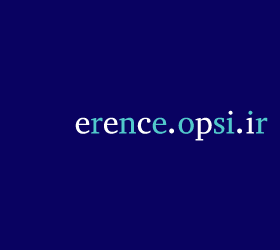Association Mission
The mission of the association is to advance the creation, communication and application of knowledge to benefit society and improve people's lives.
Membership
Contact Us
year 28, Issue 2 (ICOP & ICPET 2022 2022)
ICOP & ICPET _ INPC _ ICOFS 2022, 28(2): 707-710 |
Back to browse issues page
Download citation:
BibTeX | RIS | EndNote | Medlars | ProCite | Reference Manager | RefWorks
Send citation to:



BibTeX | RIS | EndNote | Medlars | ProCite | Reference Manager | RefWorks
Send citation to:
hosseini Z, jafarizade K. Investigation of The Effect of Thickness and Defect Density in The Absorber Layer on Perovskite-based Solar Cell Performance. ICOP & ICPET _ INPC _ ICOFS 2022; 28 (2) :707-710
URL: http://opsi.ir/article-1-2670-en.html
URL: http://opsi.ir/article-1-2670-en.html
Abstract: (1330 Views)
The relatively large bandgaps of the methylammonium lead halide perovskites are the major obstacle to achieving efficiency in the lead-based perovskite solar cells. Substituting lead with tin leads to smaller bandgaps for lead-free perovskite materials. Although lead-free perovskite solar cells show broader spectral response extended to near infrared region, they usually have relatively low responsivity. Here, we investigated the application of a mixed tin-lead perovskite material, ((FASnI3)0.6(MAPbI3)0.4), with small bandgap of 1.24 eV as the absorber material in a perovskite solar cell with inverted structure. The device simulation is performed by using SCAPS-1D simulation software. The effect of different parameters such as absorber layer quality and thickness on the performance of the (FASnI3)0.6(MAPbI3)0.4 solar cell is studied.
Type of Study: Experimental |
Subject:
Special
Send email to the article author
| Rights and permissions | |
 |
This work is licensed under a Creative Commons Attribution-NonCommercial 4.0 International License. |









